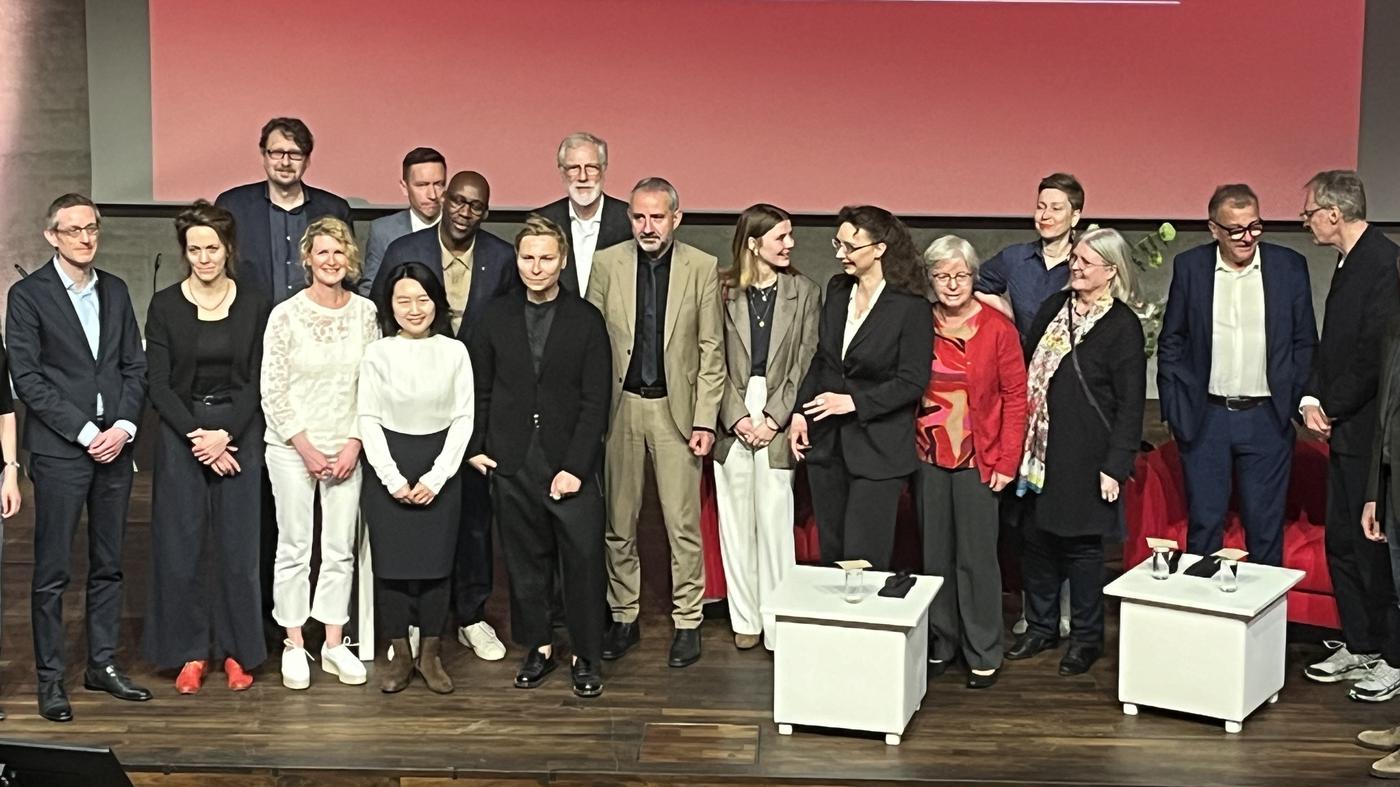It’s not entirely clear where the delay comes from, but right from the start the event is running behind the tight schedule. 19 topics and 23 discussion partners have been announced. Also a short greeting from Minister of State for Culture Claudia Roth. The Prussian Cultural Heritage Foundation (SPK) invited people to its traditional annual reception on Tuesday evening. In the auditorium of the James Simon Gallery, the foundation wants to give a 90-minute preview of its activities in 2024.
Today, results and visitor numbers are not discussed here – as in the past – but rather experiences in the SPK’s two dozen museums and archives. From the Ibero-American Institute to the National Gallery to the Ethnological Museum, directors and curators take to the stage. Artists are invited.
The British Marianna Simnett, who lives in Berlin, is showing a film installation that fits the theme at Hamburger Bahnhof on the occasion of the European Football Championship taking place in Germany in May, and the fashion designer Dawid Tomaszewski, who is donating part of his production to the Museum of Decorative Arts. He drapes three colorful couture dresses that add some sparkle to the evening.
The reform is gaining momentum
In greeting, Foundation President Hermann Parzinger speaks so quickly that you can hardly follow. The foundation is in the middle of the reform process. The general manager has been gone since the beginning of the year: the first externally visible slimming measure. The interim foundation board has decided on a new organizational model that should be implemented by the end of 2024. There is talk of “museum teams” and “service units”. The goal is more autonomy for the individual houses, their own budgets – which did not exist before – and sovereignty over personnel decisions, as far as possible.
They want to turn from a cumbersome “tanker” into a “speed boat”. “The implementation of the new target organization is taking place gradually. “The diversity and complexity of the process require time-based risk buffers,” says one of the charts that Parzinger beams onto the wall. In addition to members of the Bundestag, there are also many employees of the foundation in the audience, who probably have long known very well how difficult it is to implement changes at their employer.
From tanker to speedboat
The SPK needs an additional 30 million euros for its renovation, which was agreed upon; the requirement was originally calculated at 66 million. Claudia Roth, who is also under deadline pressure and has to leave immediately, confirmed in her speech that her authority is freeing up additional resources despite the strained budget situation. In times of toxic conflict, the foundation, as one of the largest cultural institutions in the world, is invaluable.
All that remains is to get the 16 federal states on board. Their contributions to the SPK’s financial budget have been capped since 1996. Together, all countries contribute around 15 percent of the budget, around eight percent of which is Berlin as the host country. The federal government pays around 85 percent. The states’ shares are expected to increase in the future. It needs to be increased by ten percent, maybe 30 percent. Rainer Robra, CDU Culture Minister of Saxony-Anhalt and member of the Reform Commission, is campaigning for this, sitting on stage with Berlin’s Senator for Culture Joe Chialo. Not all countries are equally enthusiastic.
“It is important to us that this global reputation becomes more visible for us in Germany, for the entire state,” says Robra. Long overdue: the Foundation Act, including the statutes that regulate the legal framework, must be renewed. Perhaps the hardest thing that has to be overcome by the board of trustees meeting in June.
Become more visible in Germany
Nobody is really allowed to make excuses that evening; the presenter whips through the program. Frans Hals in the Gemäldegalerie, Caspar David Friedrich in the Alte Nationalgalerie, a surprise in the Kunstgewerbemuseum, which will show in a series of lectures that the haute couture production of the early 1920s was located in the Tiergartenviertel, not at Hausvogteiplatz, as many assume.
Every single house of the Preußenstiftung must be competitive worldwide. There is a lot of talk about international collaborations, with Odessa, with Mumbai, with São Paulo, the collections, the Secret State Archives or the State Library have world significance and there are no problems entering into exciting collaborations. But the exhibition budgets are ridiculously tight.
But it doesn’t go into that much detail this evening. After a little more than 90 minutes, if you want, you can go up to Nefertiti, which is celebrating its 100th year of exhibition. That slows you down. Finally, with yeast rolls and wine, no one feels rushed anymore.
